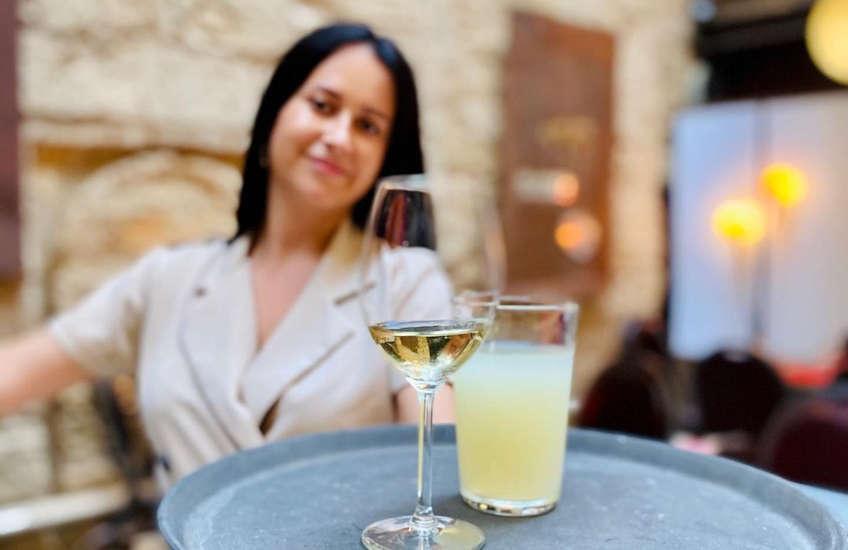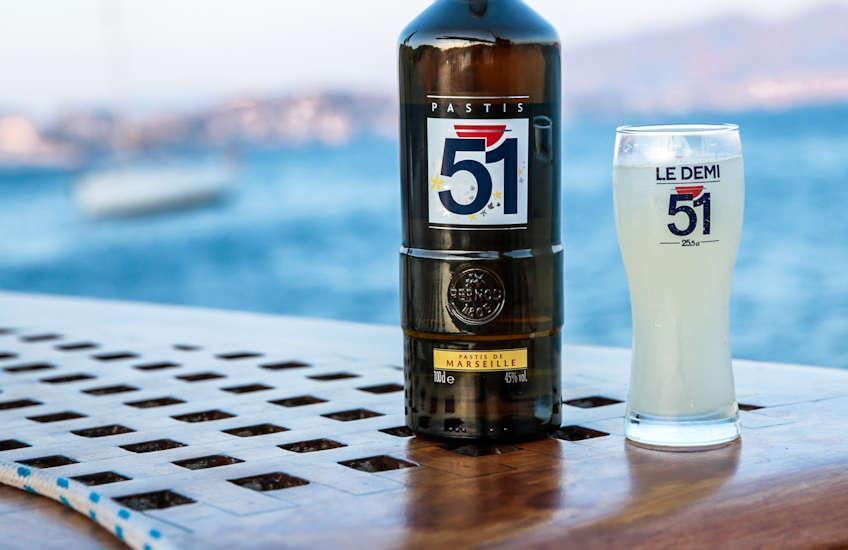Pastis, South France drink

A Short History of Pastis
Pastis was developed in Marseille as a substitute for absinthe, the potent bright green drink that was alleged to cause insanity and which was banned by the French government in 1915 because it was leading to the "corruption of society". Absinthe was however a popular drink and many people began experimenting with combinations of herbs and alcohol in order to duplicate the taste.
One of these backyard distillers was Paul Ricard. He would take his experiments around to various bars, asking people to try them and thereby perfecting his formula. He began commercial production in 1932 of Ricard - 'le vrai pastis de Marseille'. Pastis remains one of the most popular aperitifs in France, especially the South of France.
Drinking Pastis in South of France

The next thing to pay attention to is the water. Yes the water. You see Pastis in the bottle is actually a brown Whisky coloured liquor. It is only when you add water that it turns yellow. But, and it is a big but, how much water should you add? You see this is where the similarities with Whisky emerge again. As you may be aware, in Scotland it is still a hanging offence to add ice to your 'wee dram'. Instead, you're permitted to add a little water. The question is of course the amount. The less you add the more kudos your will earn. Drown it in water and you will have at best 5 minutes to leave the bar. As a guide, I always add the same volume of water as the volume of Pastis.
Finally, there is the actual drinking. A word of warning, when you first drink Pastis it will catch the back of your throat like a Mace spray. To ensure any remaining credence, try and strangle any urge you have to cough. You will then get the unmistakeable taste of aniseed. Again, you will have a strange urge to say "ooh no". Instead, what is required is a turn of the head to the side and an approving nod. Then, you must sit their in the sun and nurse you're Pastis like liquid gold
Different types of Pastis?
For connoisseurs, there are many types of pastis, usually classified according to their recipes. These brands include Ricard and Pastis 51, also Casanas and Pastis Bleu. In some brands, more than 72 different herbs and spices are used in the recipe. Although the French will have you believe that they all have a different taste, the truth is that like Whisky they all taste the same after a few glasses.
